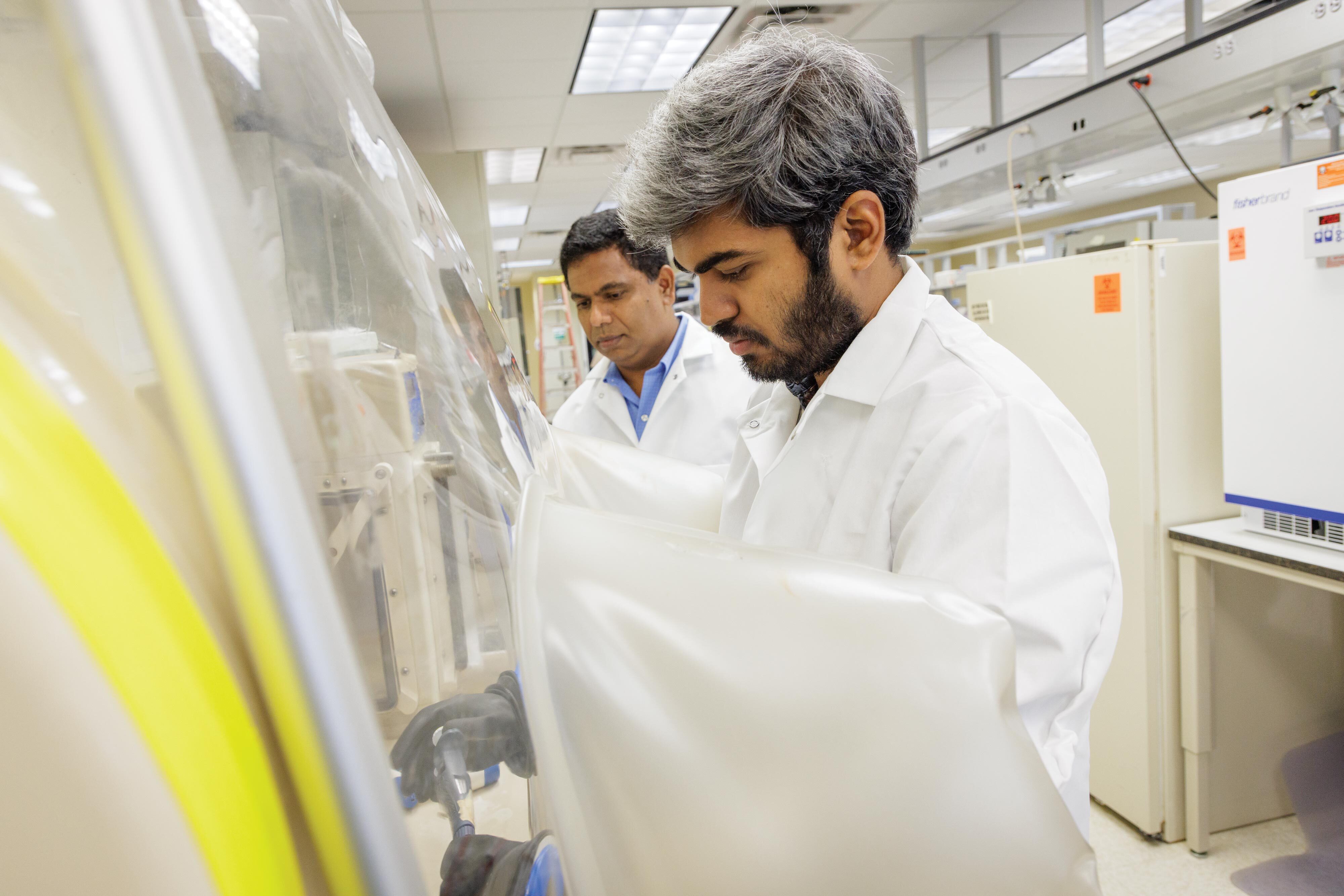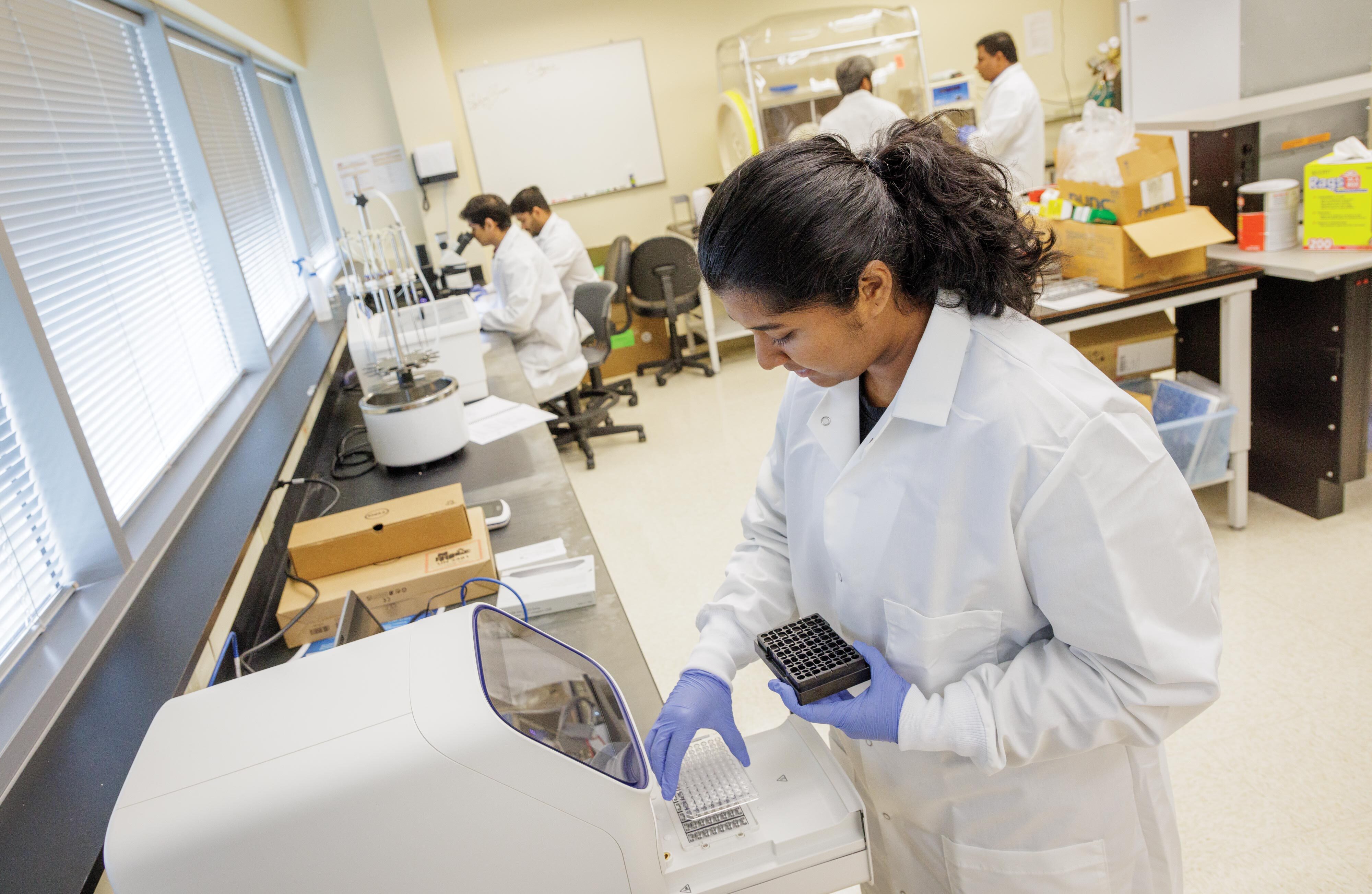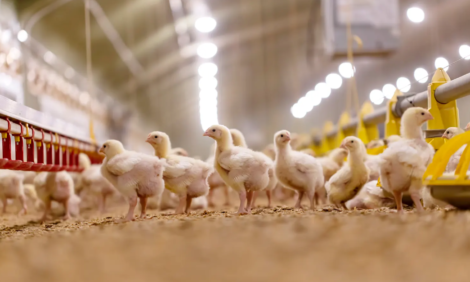



Researchers study gut microbiomes, establish a core facility
Learn how researchers plan to study the connection between animal and human microbiomesNo matter how still a person or animal might look, there is always a hive of activity going on under the surface. Microbiomes — a community of bacteria — are constantly colonizing our bodies. There are hundreds of microbes inside the body that each provide essential functions. However, without the correct balance, one can experience health problems like infections and malnutrition.
To study those effects, researchers are using the idea of One Health, which is focused on improving the lives of all species, human and animal, through the integration of human medicine, veterinary medicine and environmental science.
Oklahoma State University launched its “We are Land-Grant” strategy in October with the goal of becoming the nation’s preeminent land-grant institution. The strategic plan identified Enhancing One Health as one of four focused priority areas to meet societal needs.

Dr. Joy Scaria, OSU’s Walter R. Sitlington Endowed Chair in Infectious Diseases in the Department of Veterinary Pathobiology, and his team of students moved to Stillwater from South Dakota State University to continue and expand his research on host-microbiome interaction in the area of One Health.
Scaria’s appointment has two functions using his expertise in microbiome studies. The first is a primary research appointment on One Health and gut infections. The second component is to develop the university wide microbiome core facility.
Scaria and his team of collaborators have three research areas:
- Which species in the gut microbiome is important to prevent enteric infection?
- How does microbiota change flavonoid metabolism and gut health?
- Seek to better understand how pathogen evolution allows increased gut invasion and transmission
“My group uses an integrative approach of combining computational studies, as well as experimentation, both on animal microbiome and human microbiome,” Scaria said.
Understand the balance between health and disease
The team is approaching these problems from multiple angles. One is genetic sequencing hundreds of healthy and sick, animal and human microbiomes to understand the balance between health and disease on a sequencing level, which requires using a supercomputer.
“Since the microbiome is composed of hundreds of bacterial species, it’s an incredibly challenging problem of how to make the right combination,” Scaria said. “Because you have 500 microbes in the gut, theoretically, then you have more than 1 trillion possibilities of making the correct combination. So, it’s a collateral computational problem. So, consequently, you need heavy computational capacity using a supercomputing cluster.”
Once microbial species are identified, they must be cultured in the lab under controlled conditions to be studied. The DNA sequence information is useless if the organism cannot be grown in a culture because then therapeutics cannot be developed. The trouble with gut microbes is they are anaerobic — they die with exposure to oxygen — making them hard to culture.
“My lab has developed methods to culture about 70% of the diversity that you see on a sequence level,” Scaria said. “Typically, most people can do 20-30% skills that we developed with my lab. We are one of less than 20 labs in the US that has this capacity.”
The technique is called microbial cultural mix, Scaria said.
Bacteria is easier to detect from a plated sample. That sample may grow 10 different bacteria but there might be DNA markers present from bacteria that grow under special conditions and leave a trace. Those markers could be sequenced to find the bacteria’s genetic signatures even though it’s not growing.
Early in the development stage, Dr. Akhilesh Ramachandran — an associate professor and section head of microbiology and molecular diagnostics at the Oklahoma Animal Disease Diagnostic Laboratory — is planning future projects with Scaria’s team.
However, their relationship didn’t begin when Scaria arrived on campus early in 2023. They’ve worked together for more than five years by supplying bacterial isolate samples from Oklahoma to Scaria for genome sequencing.
“Joy’s specialty is he is a master of all things microbes, he can grow many fastidious bacterial species that are very difficult to grow under usual culture conditions. He’s got that special touch,” Ramachandran said. “Plus, he’s got great expertise in DNA sequencing and validated pipelines for genome analysis.”
Ramachandran first experienced this kind of research when he worked on a small pilot study looking at what changes happen to animals during cancer treatment. The idea was to study the impact of chemotherapy on gut microbiome.
Metagenome based disease diagnostics and drug resistance in bacteria
Along with the microbiome research collaboration, the team is collaborating in other areas such as metagenome based disease diagnostics and drug resistance in bacteria.

“In addition to sequencing and finding the genetic markers to identify bacteria and diagnose diseases, we can also use genetic markers that can give information on how susceptible a pathogen might be to treatment and potentially identify therapeutic targets,” Ramachandran said.
Germ-free mice are raised to be microbially sterile, providing a clean slate for any single species or microbial community: perfect for testing how drug treatments or therapeutics work. Scaria developed a unique germ-free chicken model to amplify his research and he is looking to continue to expand models available.
Dr. Janeen L. Salak-Johnson, Temple Grandin Endowed Chair of Animal Behavior & Well-being and associate professor in the animal science department, serves on the university wide One Health steering committee and was invited by Scaria to collaborate on the research with what she contributes to the team.
“I bring the pig model to the table more than anything,” Salak-Johnson said. “One of the initial things we talked about is that, and I also bring the immunology and the behavior to the whole equation. I’ve been getting into the microbiome stuff, and I developed a prenatal stress model looking at maternal fetal interactions.”
Salak-Johnson developed a porcine maternal prenatal stress model to look at maternal fetal interactions. This model can play a role in Scaria’s research to help understand what good and healthy microbes are.
One of Salak-Johnson’s dreams is to identify what kind of microbes they modulate in a sow that will then impact her progeny from utero and into the real world. Theoretically, the offspring would have a different signature which would hopefully allow them to better adapt and have a more profound immune response.
The 17 goals of One Health are all interconnected to Salak-Johnson. As an animal science professor and an integrative scientist, she understands problems must be approached from various angles in collaboration to be solved.
What does a normal, healthy gut look like?
Germ-free animals do not have the same gut microbiome as normal animals born into an environment that immediately interacts with microbes. One of the questions the team is working to solve is what a normal healthy gut is, but that question becomes more complex when working with a pregnant individual.
Interpersonal microbiome variation happens both in humans and animals and is the reason drugs may work in some cases but not in others. This germ-free mouse facility will help test how the variation impacts health and therapeutic success.
Not only will Salak-Johnson’s model help advance Scaria’s research, but the collaboration between the two benefits her by bringing Scaria’s expertise in statistical and computational information to help her better gather and understand complex data. Scaria also uses a bioreactors model, a key part of the core facility he is developing to collaborate across the country.
“We have a second model system called bioreactors,” Scaria said. “Bioreactors are reactive systems that mimic the gut-like condition without the host factors. So, it’s a simplified model to understand what microbes and how microbes behave among each other.”
Traditional reactors are hard to manage and expensive, but this bioreactor path eliminates that problem. In a year, up to 1,000 combinations can be tested faster.
So far, Scaria’s team has developed a library of microbes from humans, pigs, chickens and cows. There are close to 10,000 isolates across the spectrum that they systematically sequence in the lab.
“Joy’s specialty is he is a master of all things microbes, he can grow many fastidious bacterial species that are very difficult to grow under usual culture conditions. He’s got that special touch. Plus, he’s got great expertise in DNA sequencing and validated pipelines for genome analysis," Dr. Akhilesh Ramachandran, an associate professor and section head of microbiology and molecular diagnostics at the Oklahoma Animal Disease Diagnostic Laboratory.
Their culture collections library will be available to other researchers to study how healthy microbiomes interact with other pathogens.
OSU has a total capacity of 74 reactors that allows for high-throughput screening capacity. Once set up, that bioreactor system will also be a core facility open to others.
“Our studies will help in identifying the impact of microbiomes on health and how we can utilize that knowledge to improve,” Ramachandran said. “Our focus is on animal health, but I think ultimately, we will get bigger solutions that can apply to humans also. We know it’s easier to do studies on animals, than humans.”
The core facility is supposed to be an outreach and a collaborative effort and to provide opportunities for others, Salak-Johnson said.
The germfree chicken and mouse models, along with the culture library, are useful resources that Scaria makes available to every researcher in the state through the new core facility, Ramachandran said.
“Overall, it is going to add to the glory of OSU,” Ramachandran said. “It’s the next generation scientists that are being trained, and the number of students he’s training. It’s going to be really amazing.”








